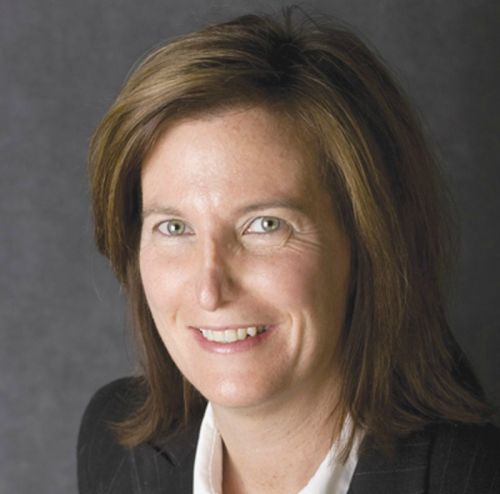 PERSON OF THE WEEK: Mary Beth Doyle is founder of LoyaltyExpress, which offers marketing automation and customer relationship management (CRM) solutions for mortgage lenders. The company's CustomerManager CRM platform helps mortgage lenders automate and manage their marketing campaigns. The firm also plays a role in helping lenders develop compliant messaging for their marketing campaigns, which is critical considering the Consumer Financial Protection Bureau (CFPB) has taken action against several lenders in recent months for alleged deceptive advertising. MortgageOrb recently interviewed Doyle to learn more about how lenders can protect themselves from potential regulatory action when developing their marketing campaigns.
PERSON OF THE WEEK: Mary Beth Doyle is founder of LoyaltyExpress, which offers marketing automation and customer relationship management (CRM) solutions for mortgage lenders. The company's CustomerManager CRM platform helps mortgage lenders automate and manage their marketing campaigns. The firm also plays a role in helping lenders develop compliant messaging for their marketing campaigns, which is critical considering the Consumer Financial Protection Bureau (CFPB) has taken action against several lenders in recent months for alleged deceptive advertising. MortgageOrb recently interviewed Doyle to learn more about how lenders can protect themselves from potential regulatory action when developing their marketing campaigns.
Q: Mortgage lenders have been fined by state and federal agencies, including the CFPB and Federal Trade Commission, for making ‘misleading’ claims in their advertising and marketing materials. In light of recent warnings from these regulators, would you say mortgage lenders today need to be more careful than ever in how they craft their marketing and advertising content?
Doyle: Mortgage lenders must definitely be more diligent than ever before. Unfortunately, the overall independent environment that loan officers have historically been allowed to operate in has created detrimental fragmentation for controls within organizations. Entrepreneurial guidelines must be established that allow loan officers to dynamically engage in varying business practices while securing consistent compliance-approval loops across the enterprise.
The classic business methodology of change management comes strongly into play here. Mortgage executives are failing by placing their priorities on loan officers being happy rather than implementing centralized frameworks for compliance controls. Realizing the harsh consequences of Dodd-Frank and the CFPB means realizing that workplace conditions have to change. Loan officers can no longer operate independently of corporate policies – their isolated actions are what led to the heightened regulations around mortgage marketing in the first place, including fines and other punitive measures.
As a lender, if you are not completely confident in your compliance controls and mechanisms, you are more than likely to be at risk. Take meaningful action by aligning the organization with compliant methodologies and best practices. You have everything to gain by substantially diminishing risk.
Q: Considering the potential for fines, civil suits and damages to reputations, would you say the consequences for making ‘false’ claims is greater today than it was six years ago? Why?
Doyle: The potential and consequences of false advertising are much greater today because we live in a rapidly advancing age of technology. The power of online advertising and social media, for example, establishes a much greater audience of potential victims when it comes to misleading or erroneous content. And that is what regulators base their assessments for damages on: the potential number of people that could have (not actually ‘did’) become misled by specific message(s) or communication(s). Social media can rapidly lend to viral distribution, so the consequences and fines are much steeper than more limited media vehicles of years past. Overall, it is important to be diligent. Investing wisely in corporate marketing solutions that safeguard organizations and individual loan officers from compliance mistakes will more than pay for itself in both the immediate and long term.
Q: What are the top three things that lenders need to be aware of or cautious about when developing their marketing and advertising campaigns today? How is that different from six years ago?
Doyle: Content, privacy and licensing are among the top three areas of concern in today's ever-intensifying, compliant-marketing environment. With the right methodologies in place, they can be steadily monitored and controlled.
The CFPB, as well as county and state regulators, is locking down standards for allowable phrasing in the content describing mortgage products and services to centers of influence (customers, partners, prospects). Even though the rules may vary from one jurisdiction to another, adherence to such variables is expected. For example, in many instances, it is acceptable to use ‘pre-approval’ as a term to convey that a customer has met an early set of requirements in the process of seeking loan approval.
However, that term in other jurisdictions may no longer be compliant. A comprehensive, compliant-based framework will detect such content violations for replacement of acceptable phrasing (which, in this case, would be ‘prior approval’). These ever-changing and ever-jurisdictional rulebooks must be synchronized into content messaging to successfully and dynamically generate penalty-free business-development initiatives.
Privacy is an obvious concern for regulators – mandating the rigid security of customer information. Very few industry professionals are precisely aware of the narrowing definition and elements of confidential data points (and how these fields directly impact the delivery and representation of lender-to-customer/prospect communications). Seeing as it is a complex array of conditions, a compliant-marketing structure must encompass embedded algorithms that steadily detect decisioning as a basis to trigger appropriate outcomes on the fly. Without this framework, it is too easy to make errors, particularly with multiple loan officers and state and local government requirements involved.
Another top compliance concern for mortgage lenders is how loan officers represent their qualifications and roles within the organization and industry. For example, loan officers are not decision-makers in mortgage origination yet often represent themselves as being more senior than they actually are within a lender's hierarchy (senior vice president rather than mortgage loan originator, for example).
Also, loan officers often volunteer information that is more appropriate coming from a tax attorney or a CPA, even if it comes with a disclaimer such as, ‘I am not an accountant but have heard of people that deduct this at tax time.’ Establishing a framework that locks down personalization fields and takes direct feeds and updates from human resources departments minimizes the risks associated with overstated qualifications and titles.
Also, when loan officers are not licensed as CPAs, it is important to keep track of any guidance-based content that falls outside of the loan officer's licensed knowledge base. This is the type of homeowner communication that can lead to big problems and fines (even though good intentions are often involved).
Q: One of the main ways lenders have gotten into hot water with regulators is by making claims about interest rates. The CFPB has warned lenders not to promote low rates that end up misleading consumers about the terms of the product actually offered. But rates are liquid – they constantly change – so what are the main ways that lenders need to be cautious when advertising rates today? And, again, how has that changed since six years ago?
Doyle: Six years ago, many loan officers were generating their own rate sheets with very little control or input from their lenders – and usually (and typically) were generated at the last minute, due to procrastination and frantic requests (which resulted in rush efforts, errors and low-quality results). As soon as the data points were assembled into flyer templates, off they would go as emails to partners and prospects, dropped off as hard copies to real estate offices, and placed on display at open houses. These are scenarios that recently got a large mortgage company fined to the tune of about $15 million (as part of a $20 million CFPB action for various infractions). Misleading advertising on rates and programs was a critical component of the judgment.
A lot has changed in six years in terms of rate sheets and the tolerance of mortgage executives turning a blind eye on loan officers' fragmented approaches to building them. In large part, chief compliance officers are now heavily present in the leadership of mortgage operations – which has dramatically altered the way loan officers are allowed to build their sales and marketing collateral. Realizing that rate sheets serve as a necessary point of reference when done right, the subject remains a hot topic with many loan officer veterans. It has come full circle – from loan officers once having been allowed to haphazardly create rate sheets, to organizations strictly forbidding them in any shape or form, to today's more reasonable approach that suggests executives and compliance officers realize the value of rate sheets as educational overviews – as long as they can be centrally controlled, calculated, formatted and approved before public distribution.Â
Another difference in rate sheets today is that they are being calculated based on the alignment of marketing platforms with very specific pricing engines. Because interest rates steadily fluctuate and quotes are binding, tightly matrixed financing offers that are precise, compliant and time-sensitive are a primary objective. It is all about keeping consumers safe and preventing disasters.
Lenders accomplish this by using systems that embed appropriate calculation tools, pricing engines and audit trails as precise indicators of each loan officer's actions within their marketing platforms on an ongoing basis. Without a concrete trail of information and controls, both the organization and its loan officers become further jeopardized by interacting with inadequate systems and methodologies.
Q: How has technology (in particular, the Web) changed lenders' ability to manage marketing content? Does technology help lenders stay compliant by making it easier for them to manage their campaigns? Or by making it easier to update content and messaging? Or does it present even more risks, in that it creates increased complexity?
Doyle: Web-based technology is the single-most substantial advancement for all of us in business today. Operating in the cloud allows for exceptional visibility, controls and responsiveness to a broad array of operational demands. In the case of managing marketing content, the impact of global and local resources, data sharing and file sharing, and 24/7 anywhere, anyplace, any-authorized-person access has revolutionized the way we work together. Corporate marketing departments orchestrating internal product and campaign requests (with and without third-party involvement) allows for real-time enhancements and modifications across the enterprise.
CRM and Web-to-print platforms are gaining tremendous traction – especially in light of ever-intensifying CFPB-compliance-control demands. This is not to say that great risk is not factored into the equation. Whenever anyone has a computer or mobile device within reach, he or she can quickly post a social media or email communication based on his or her own discretion and effort.
That said, individual mortgage professionals today realize the intensifying consequences and penalties that result from self-generated improper marketing content (and become largely responsible themselves for subsequent violations). The world of content management as a result of the Internet has become more dynamic and responsive than ever before, and we will continue to benefit from the leaps and bounds of innovation that we are fortunate enough to be experiencing each and every day.
Q: How have the new rules pertaining to vendor management changed the business relationship between lenders and their marketing/advertising partners? What new dynamics have come into play?
Doyle: New vendor-management dynamics are dramatically changing the B2B landscape, as they place exceptional investment responsibilities on individual third-party providers. As the only mortgage-marketing company serving as a top 50 critical vendor to a top three world bank, I can assure you that the Federal Reserve, CFPB and other regulatory agencies are paving the way for zero-tolerance levels across multiple security and infrastructure standpoints to allow retail banks and mortgage companies to continue working with and benefiting from third-party services, products and expertise.
When you take into consideration that over 90% of data breaches result from third-party relationships, there is no wonder left in the equation of heightened demands and requirements that are fast becoming the way of life. Intensive terrorist actions are no longer a simple concern of disruption to the U.S. banking system – but rather, total destruction. As a result, we must all be militant about our ongoing preparedness and investments for the solutions needed to keep capitalism alive and thriving in the banking and mortgage industry. Standing up to the ever-intensifying rigors of security and compliance is absolutely the name of the game.












